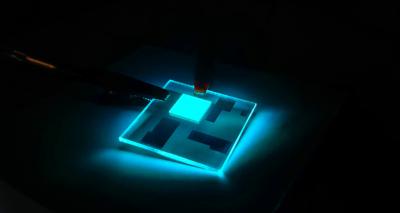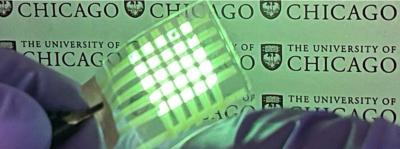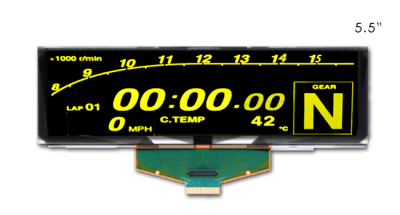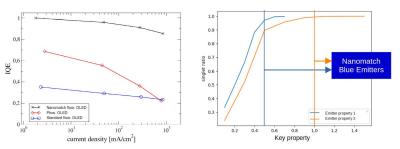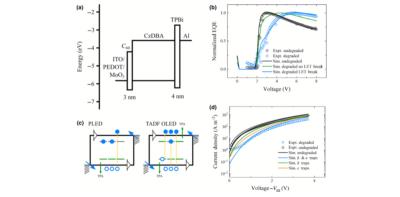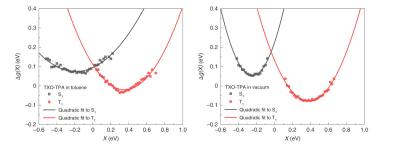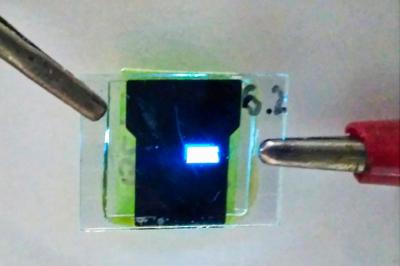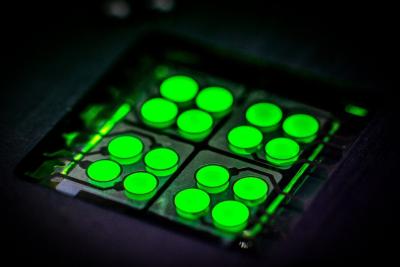Researchers reach 100% IQE with a single-layer TADF device, getting closer to commercial viability
A few months ago we reported on research conducted at Germany's Max Planck Institute, led by Prof. Paul W.M. Blom, that looks into single-layer OLED devices. In such devices, a single TADF OLED emitter layer is sandwiched between two electrode - a much simpler design compared to commercial OLED devices that use multilayer stacks, sometimes with 10 or more layers.
The researchers the the MPI say that in fact it is possible to develop highly efficient OLEDs with just the TADF emitter, as there's no fundamental reason or major benefits that arise from multilayer OLEDs. The researchers continue their work, and now they have developed a new single-layer blue OLED in which every injected electron is converted into a photon - or 100% IQE. This is the first time that such a single-layer OLED device was demonstrated (see image above).
